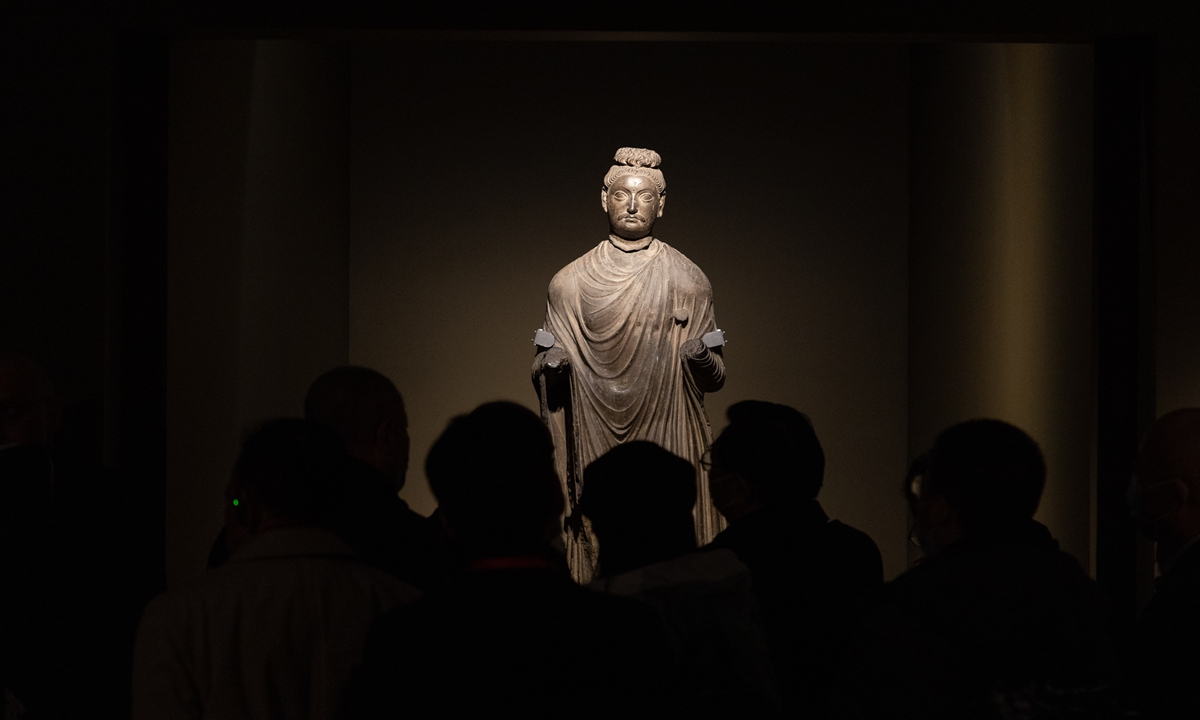
Spectators view a standing Buddha statue from the 1st-2nd century AD at the exhibition. The distinct Europid facial outline shows the influence of Greek civilization on Gandharan Buddhist art. Photo: Li Hao/GT
A walk through the Hall of Literary Brilliance of the Palace Museum in Beijing, visitors felt transcending time and space to the ancient Pakistan on a display, which offers a better understanding of time-honored cultural exchanges between China and Pakistan along the Silk Road.
As the largest Gandhara cultural exhibition ever held in China, the Gandhara Heritage along the Silk Road: A Pakistan-China Joint Exhibition, has on display 203 artifacts available for the enjoyment of history and culture enthusiasts in China starting from Thursday. The event was jointly organized by the Palace Museum and the Department of Archaeology and Museums at the National Heritage and Culture Division of Pakistan.
China and Pakistan are the proud inheritors of the archaeological and cultural heritage of the remotest integrity, said Fareena Mazhar, secretary of the National Heritage and Culture Division of Pakistan, at the opening ceremony of the exhibition on Wednesday.
"Our cultural ties rooted in our history are a source of inspiration and strength for our present and future relations," she said.
The exhibition will be a landmark in the cooperation between China and Pakistan in cultural heritage preservation and presentation, Mazhar told the Global Times. "To take our relationship and join endeavors further,this exhibition will help promote our shared heritage at the international level," she said.
The archaeological sites of ancient Gandhara are mainly located in the area from the Peshawar Valley in northern Pakistan to the east bank of the Indus River and the eastern part of the Kabul Valley in Afghanistan, which was once a major transportation route on the ancient Silk Road.
Experts from the Palace Museum told the Global Times that Gandhara culture was a product of the amalgamation of diverse civilizations, including Greek, Persian and Indian along the Silk Road, which not only promoted the development of Buddhist statue art, but also played an important role in the process of introducing Buddhism to China and gradually localizing it.
Among the exquisite artifacts on display, 173 came from seven museums in Pakistan, which were mostly excavated from archaeological sites dating back from the second century BC to the 10th century AD. In addition to early Buddha and Bodhisattva statues, pagoda building components and stone carvings, there are also gold and silver artifacts and pieces of jewelry, fully demonstrating the stylistic diversity of Gandhara culture and its artistic charm, as well as the historical originality of the intermingling of multiple cultures.
Most of the 30 artifacts from the Palace Museum can be traced back to the ancient Gandhara region to China's Qinghai-Tibet Plateau through centers of the time such as Swat and Kashmir on the Silk Road, which acted as catalysts for the development of China's Tibetan Buddhism art after the l0th century, demonstrating the long history of cultural and artistic exchanges between the two countries.
According to the Palace Museum, preparations for the exhibition started in 2019, and the project was twice listed in the joint statements between the two countries on February 6 and November 2, 2022.
This year marks the 10th anniversary of the Belt and Road Initiative (BRI). The Palace Museum, will further become a cultural meeting place for the exchange of multi-civilization, Director of the Palace Museum Wang Xudong said at the opening ceremony, adding that he looks forward to making this exhibition a base for extensive cooperation between China and Pakistan in heritage conservation and personnel exchanges, and contribute further to the bilateral friendship.
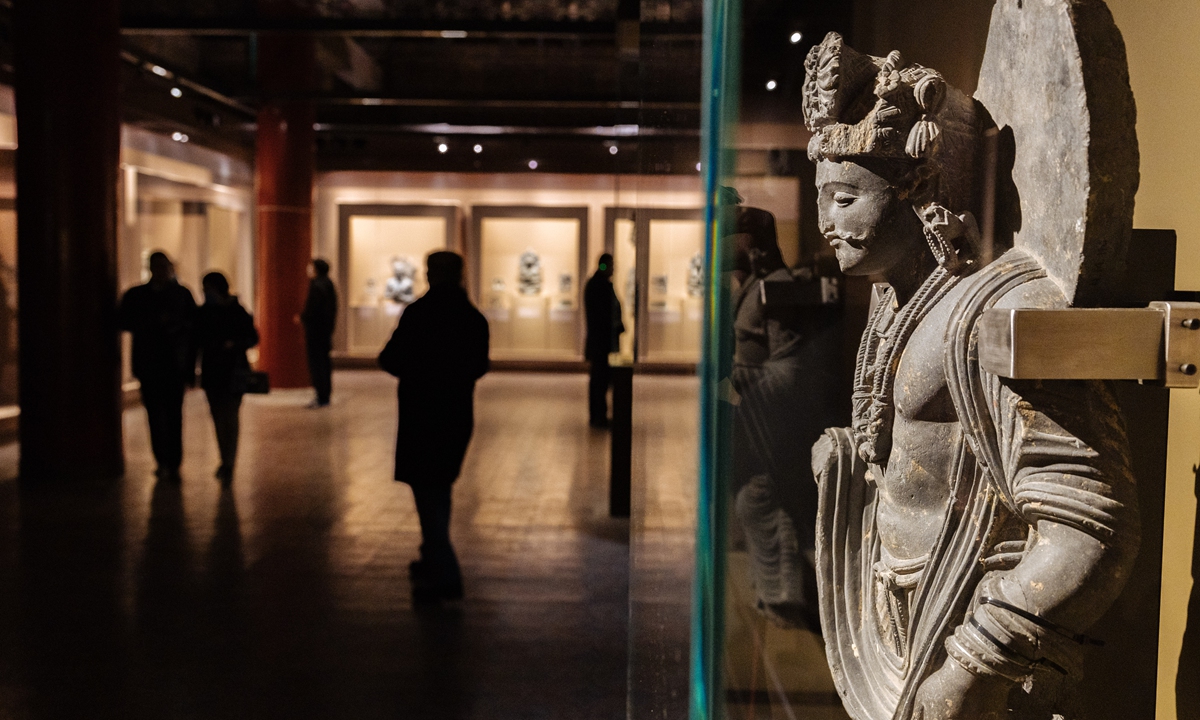
A statue of a Bodhisattva from the 2nd and 3rd centuries AD is on display in the exhibition hall. Photo: Li Hao/GT
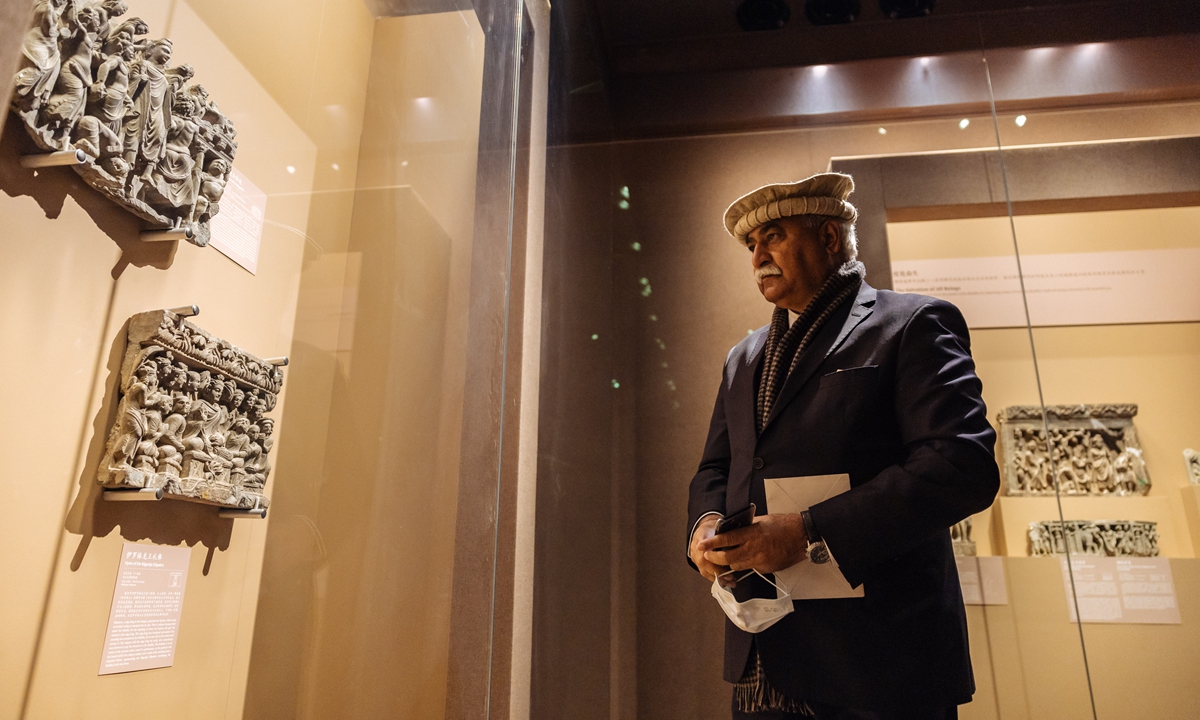
A visitor examines exhibits at the exhibition. Photo: Li Hao/GT
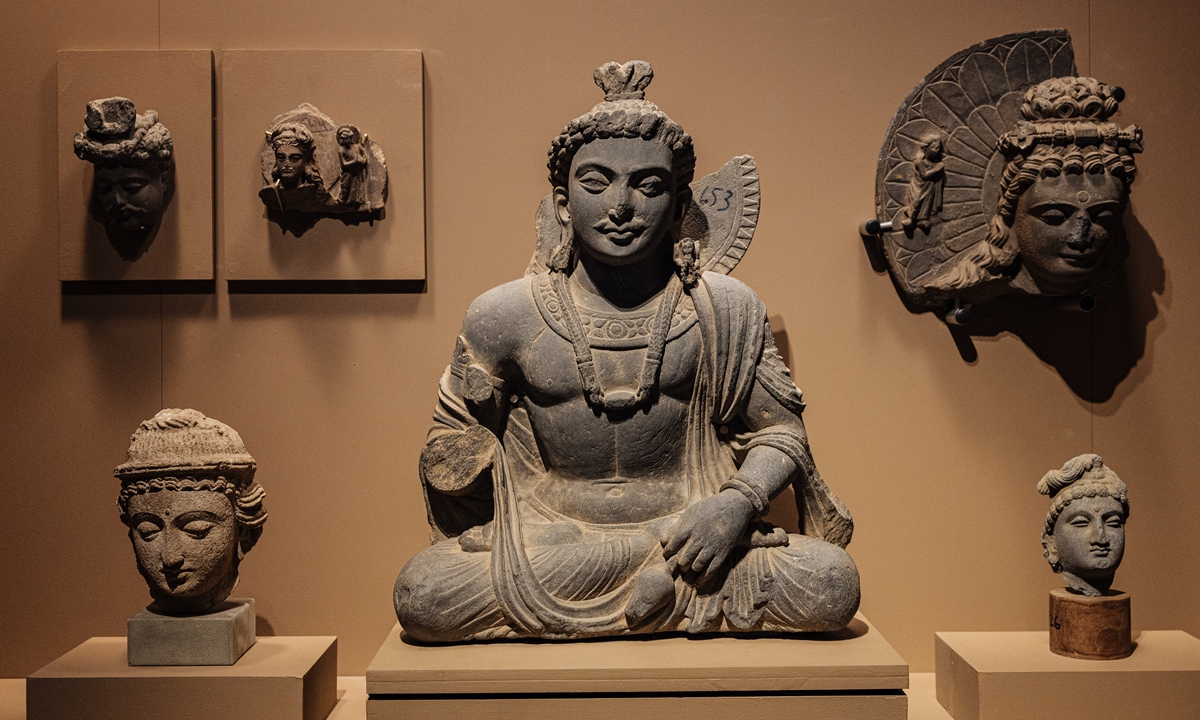
Buddhist statues on display at the exhibition Photo: Li Hao/GT
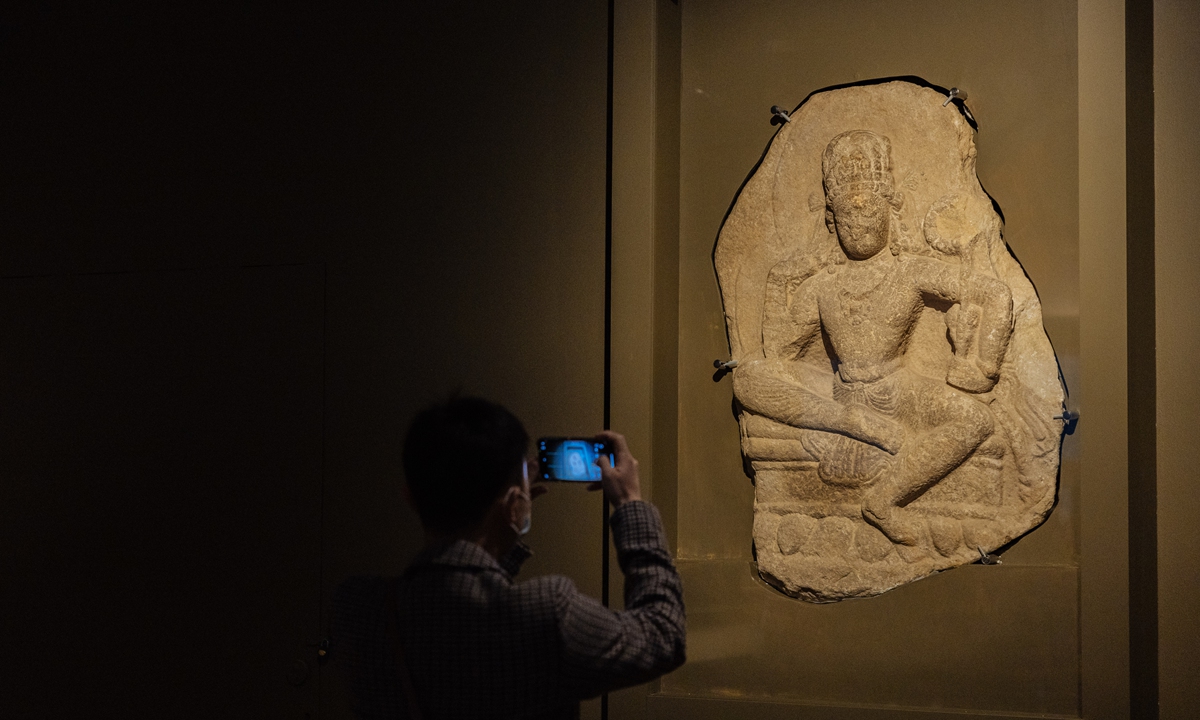
A visitor takes a photo of a late Swat-style statue of Avalokitesvara at the exhibition. The statue likely dating back to 7th-8th century was discovered in the Swat District of northeastern Pakistan. Photo: Li Hao/GT
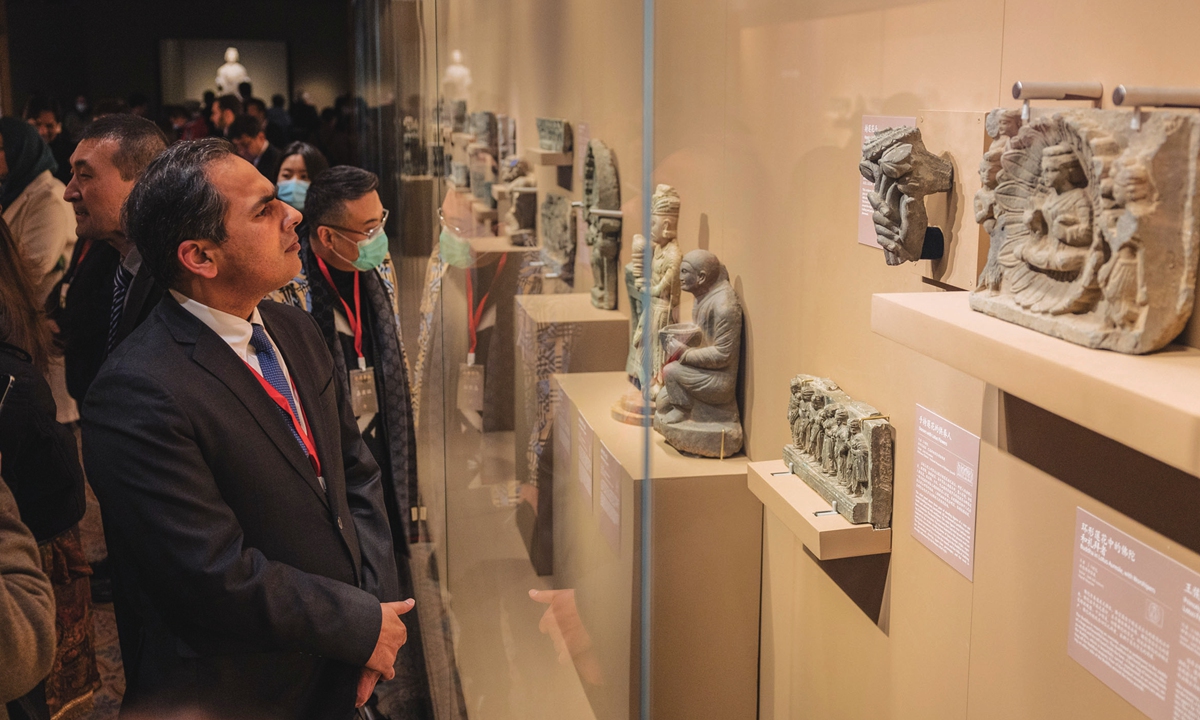
Spectators view exhibits at the Gandhara Heritage along the Silk Road: A Pakistan-China Joint Exhibition at the Palace Museum in Beijing on March 15, 2023. Photo: Li Hao/GT









